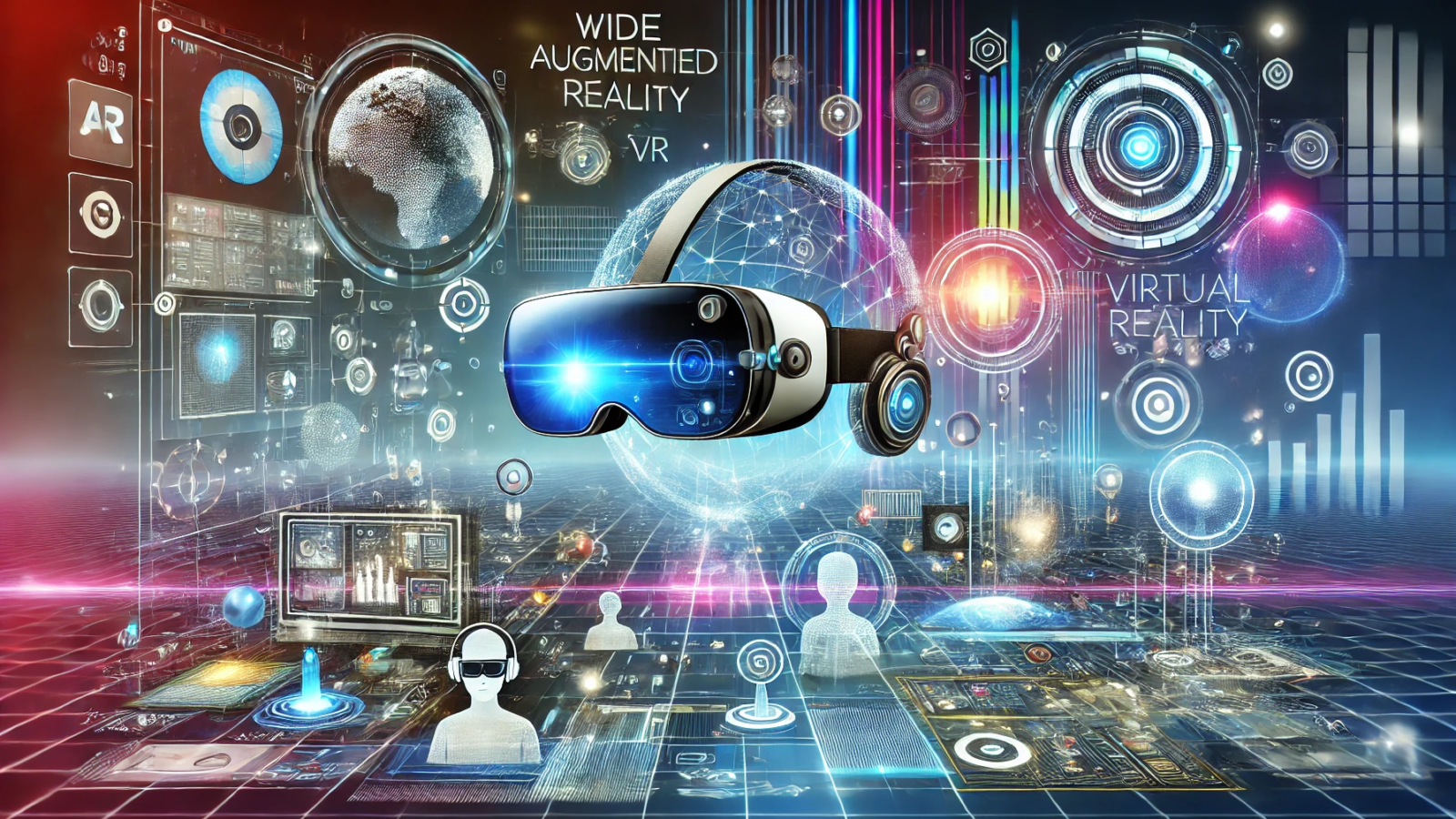Augmented Reality (AR) and Virtual Reality (VR) are transformative technologies that are revolutionizing the way we interact with digital content and the physical world. Both technologies have distinct characteristics and applications, but they share the common goal of enhancing our perception and interaction with our surroundings.
What is Augmented Reality (AR)?
Augmented Reality (AR) overlays digital information onto the real world, enhancing the user’s experience by adding layers of context and interaction. AR is typically experienced through devices such as smartphones, tablets, or AR glasses.
Key Applications of AR
- Retail: AR enables customers to visualize products in their own environment before purchasing. For instance, furniture retailers use AR apps to let customers see how a piece would look in their home.
- Education: AR provides interactive learning experiences. For example, students can explore 3D models of historical artifacts or biological structures.
- Healthcare: AR assists in surgical procedures by overlaying critical information onto the surgeon’s field of view, improving precision and outcomes.
- Gaming: Games like Pokémon GO use AR to blend virtual characters with the real world, creating an immersive gaming experience.
- Real Estate: Potential buyers can take virtual tours of properties, visualizing different design options and layouts.
What is Virtual Reality (VR)?
Virtual Reality (VR) creates a completely immersive digital environment that replaces the physical world. VR is experienced through headsets that cover the user’s eyes and ears, blocking out the real world and providing a 360-degree view of the virtual environment.
Key Applications of VR
- Gaming: VR provides fully immersive gaming experiences, placing players directly into the game environment. Popular VR games include Beat Saber and Half-Life: Alyx.
- Training and Simulation: VR is used for training in various fields such as aviation, medicine, and the military. It allows for realistic practice without the risks associated with real-world training.
- Education: VR can take students on virtual field trips to historical sites, deep oceans, or outer space, providing experiential learning opportunities.
- Healthcare: VR is used in therapy for conditions like PTSD and anxiety, offering controlled environments where patients can face their fears.
- Architecture and Design: Architects and designers use VR to create and explore virtual models of buildings and interiors, allowing for better design decisions and client presentations.
Differences Between AR and VR
- Immersion: AR enhances the real world by adding digital elements, whereas VR creates a completely new digital environment.
- Devices: AR typically uses smartphones, tablets, or AR glasses. VR requires specialized headsets like the Oculus Rift, HTC Vive, or PlayStation VR.
- Applications: AR is often used for enhancing real-world experiences, while VR is used for creating immersive digital experiences.
Future Trends
- Mixed Reality (MR): Combining elements of both AR and VR, MR creates new environments where physical and digital objects coexist and interact in real-time.
- Improved Hardware: Advances in hardware, such as lighter and more comfortable headsets, will enhance user experiences.
- Wider Adoption: As the technology becomes more accessible and affordable, AR and VR will see broader adoption in everyday applications.
- 5G Integration: The rollout of 5G networks will provide the high-speed, low-latency connections needed for seamless AR and VR experiences.
Conclusion
AR and VR are at the forefront of technological innovation, offering new ways to interact with digital content and the real world. Their applications span a wide range of industries, from entertainment and education to healthcare and retail, making them powerful tools for enhancing human experience.
References
- Augmented Reality (AR): Wikipedia
- Virtual Reality (VR): Wikipedia
- MIT Technology Review: Top 10 Breakthrough Technologies 2024
- TechRadar: The 9 Hottest Content Marketing Trends to Follow in 2024


Add a Comment